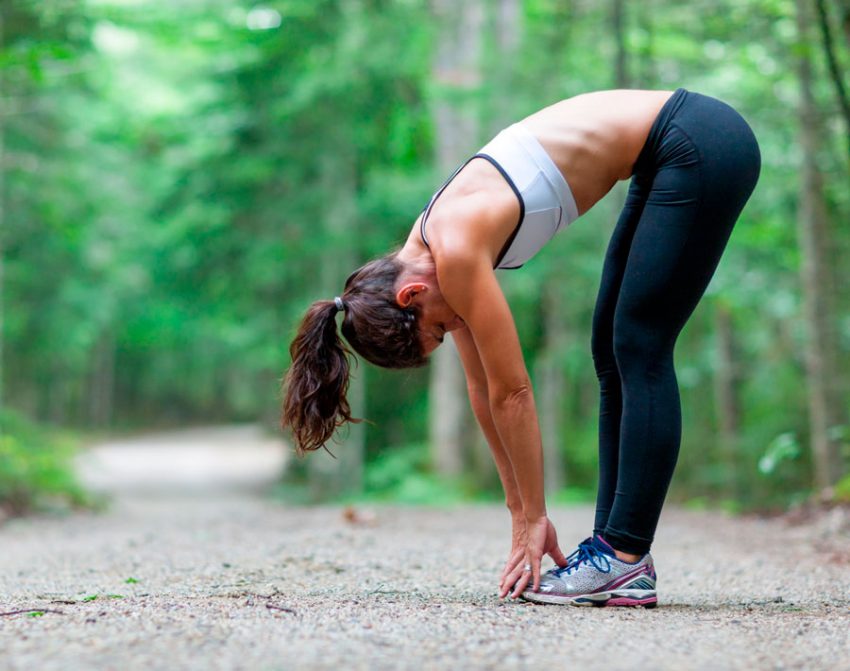Normal forward bends develop the rear chain. Exercise even without weight strengthens the long back muscles, increases the mobility of the hip joints, improves flexibility, and develops the hamstrings and glutes. Common in gymnastics, and various types of rehabilitation training. In strength training, it is performed in a variation of “good milling”, that is, a forward bend with the barbell. Some Methodists consider the Romanian and dead deadlift as a variation of the incline. This is correct, since in all three movements, flexion occurs only in the hip joint.
Execution technique
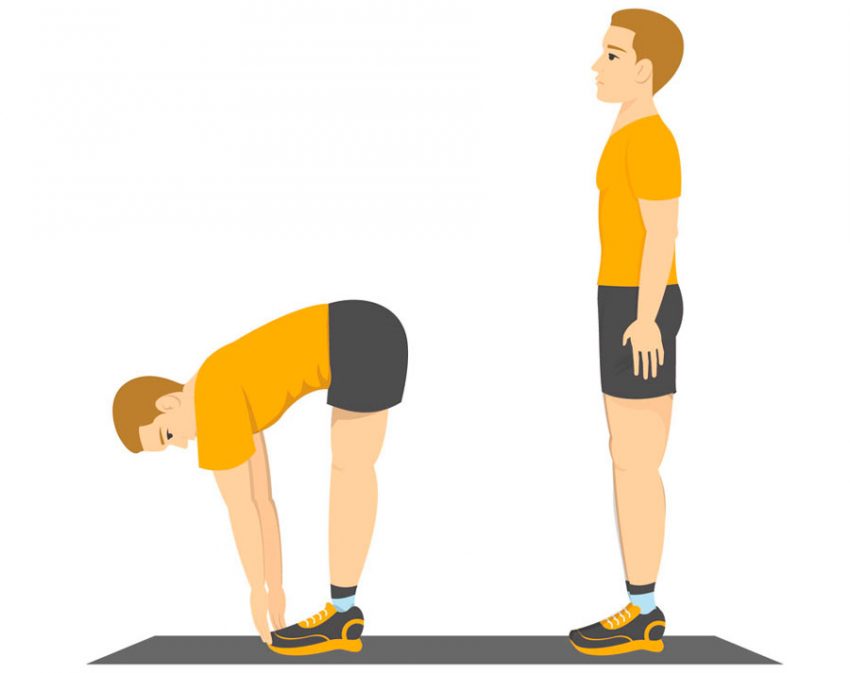
Initial position
- Feet under the pelvic bones or slightly wider;
- Hands can be extended both along the body, if you plan to learn to pull, and over your head;
- The back is neutral, it is not necessary to remove the natural deflection of the spine with the help of a strong retraction of the abdomen;
- The forward bend is performed while inhaling.
Performance
- Bend at the hip joints;
- Take your pelvis back;
- The knees are soft;
- The arms remain extended along the body or over the head;
- Bend to the depth to which your back remains straight;
- As you exhale, rise to the starting position and actively continue to perform the exercise;
- The pace of inclinations without weight is calm – flexion and extension on inhalation and exhalation.
Attention
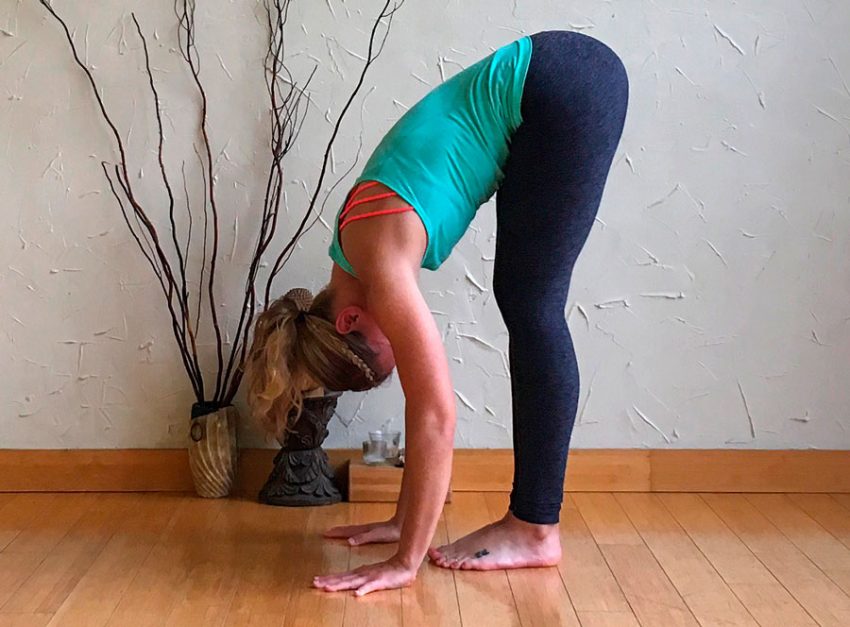
- It is forbidden to perform the exercise at a ragged pace, forced lifting excludes the possibility of working out the muscles, makes it easier to enter the slope, but does not allow to control the position of the back. High-speed work in this exercise is available only to well-physically developed gymnasts who have access to both full amplitude and high speed;
- The head should not be lifted, this will not help to pump muscles more efficiently;
- Putting your chin on your chest is also not worth it;
- Instead of jerking movements, you should smoothly lower and raise the body;
- The spine remains straight, natural lordosis is preserved;
- Excessive knee movements like the classic deadlift (pushing off with the legs) are excluded.
Recommendations
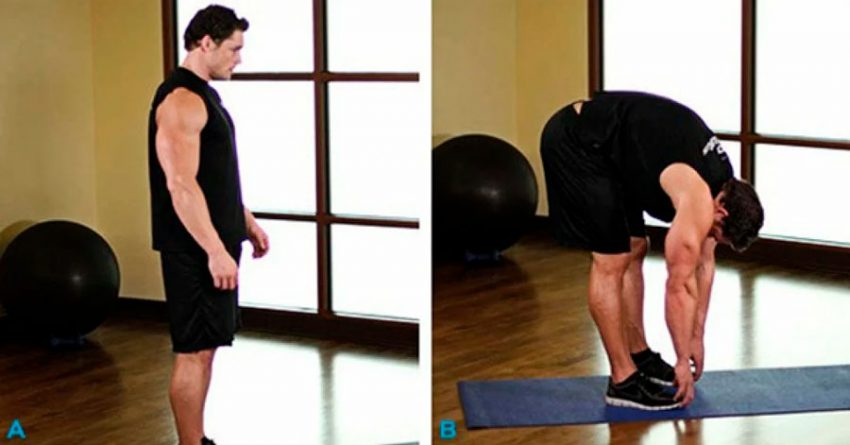
- Legs should be kept as much as possible “off” from the movement, the knees are either slightly bent or straightened, but the entire position of the hips excludes pushing off the floor;
- You do not need to push yourself as deeply as possible into the deepest slope, stay at the level that is natural for the body;
- Do not bend over;
- Eliminate unnecessary tension on the back of the thigh by bending your knees and fixing them in a flexion position if you are not comfortable;
- Work more at the expense of the glutes and thigh muscles, rather than at the expense of the lower back
Execution options
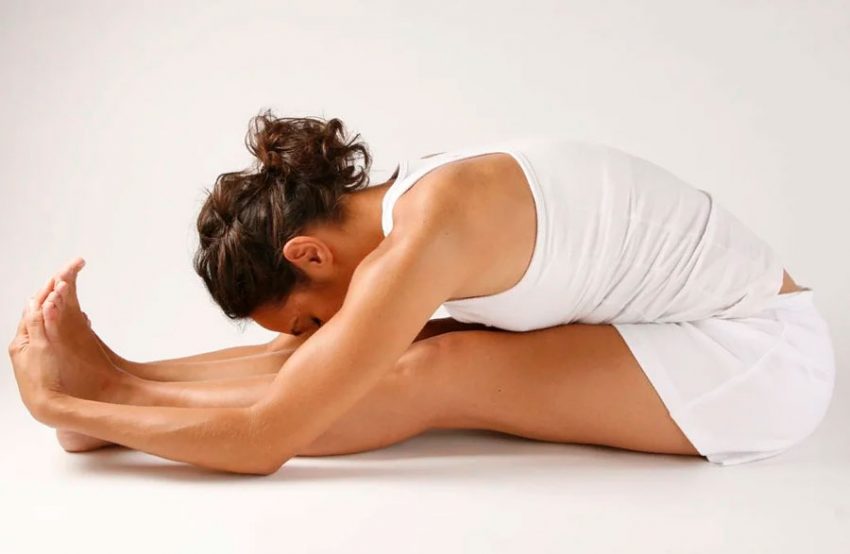
- Tilts from a sitting position . You need to sit on a gymnastic bench or bench for a bench press. The bends are performed forward, exhale with effort, that is, while standing up. This is a very specific variation and is used in sports as a way to increase the mobility of the hip joints;
- Depth slopes . This is an option while standing on a stand, it is suitable for those who have enough amplitude, and who can really bend below the level of their feet so as not to bend their back completely.
